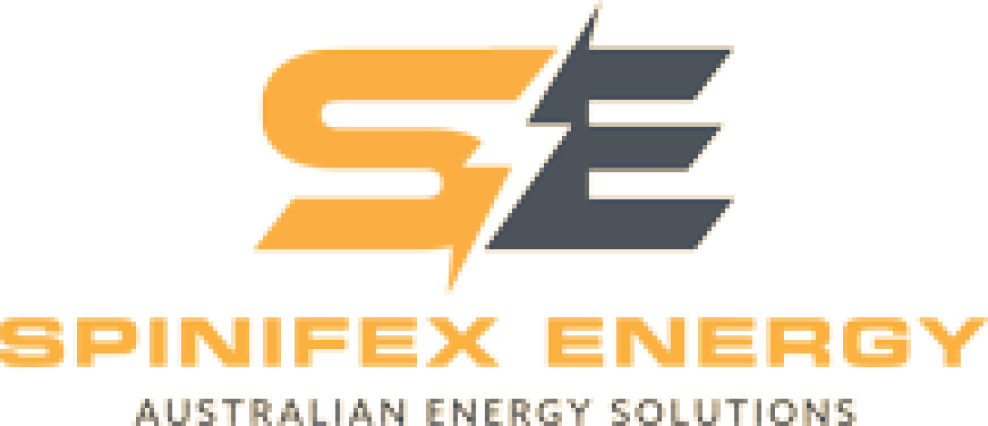Commercial solar project development is transforming the energy landscape for businesses across the globe. At Spinifex Energy, we’ve seen firsthand how solar power can slash operational costs and boost sustainability efforts.
This guide will walk you through the essential steps to develop a successful commercial solar project, from initial assessment to financing options. Whether you’re a small business owner or a large corporation, harnessing the power of the sun can be a game-changer for your bottom line and environmental impact.
How to Assess Your Commercial Solar Potential
Energy Consumption Analysis
The first step in assessing your commercial solar potential involves a thorough examination of your energy consumption patterns. This includes grid consumption analysis and load profile evaluation. Review your energy bills from the past 12-24 months to identify usage trends, peak consumption times, and seasonal variations. This data is essential for accurate solar system sizing.
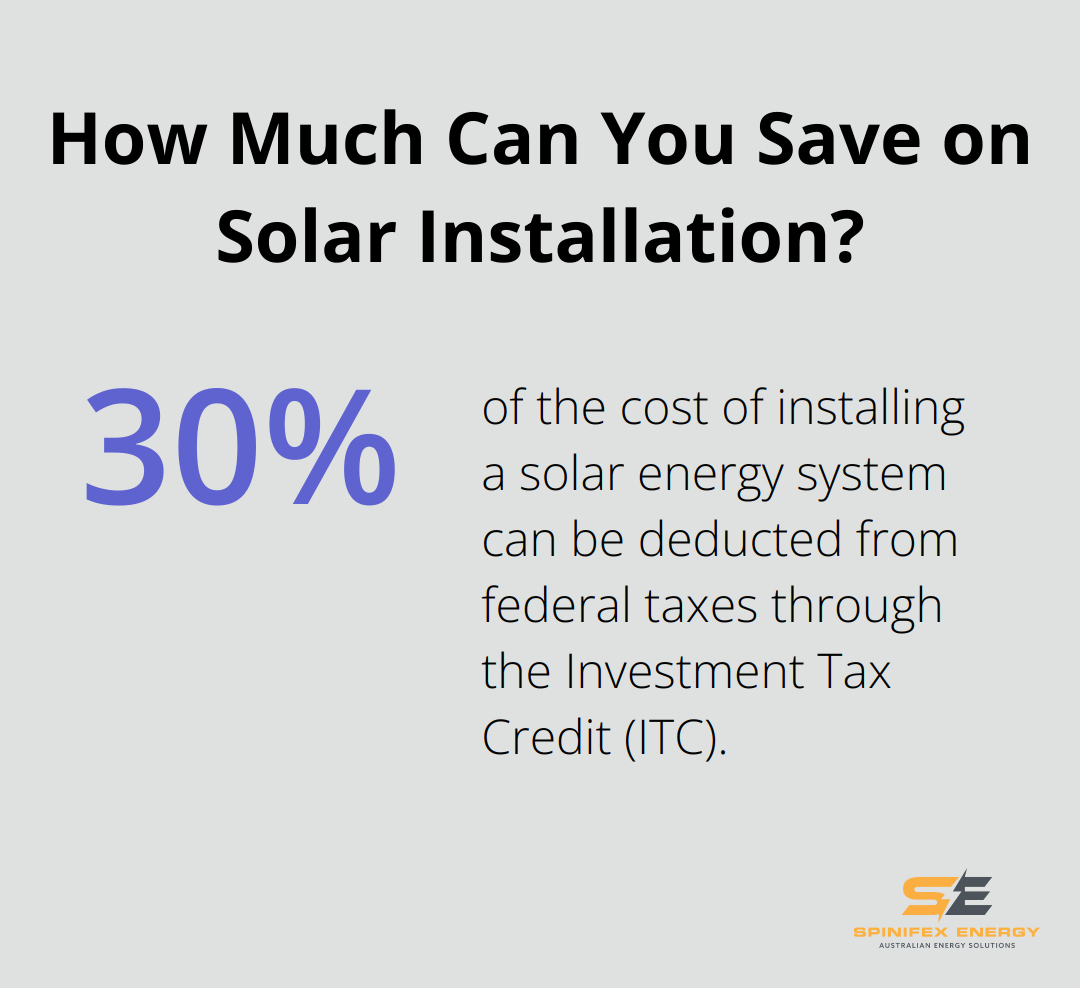
Many utility companies provide online tools to help track and analyze energy usage. For more detailed insights, consider creating an effective energy management plan. These systems range from $2,000 to $50,000 (depending on facility size and complexity) but often pay for themselves through energy savings.
Space Evaluation
Next, evaluate your available roof or land space. A general rule of thumb suggests about 100 square feet of roof space for every 1 kilowatt of solar panels (though this can vary based on panel efficiency).
Consider these factors:
- Roof age (ideally less than 10 years old)
- Orientation (south-facing in the Northern Hemisphere is optimal)
- Shading (minimal is best)
If your roof isn’t suitable, explore ground-mounted systems or solar carports as alternatives.
Don’t overlook weight considerations. Solar panels typically add 3-4 pounds per square foot to your roof load. A structural engineer should assess your roof’s capacity to ensure it can support the additional weight.
Local Regulations and Incentives
Research local regulations and available incentives thoroughly. Zoning laws, building codes, and permit requirements can significantly impact your project timeline and costs. Some jurisdictions have streamlined permitting processes for solar installations, potentially saving you time and money.
The federal Investment Tax Credit (ITC) allows you to deduct 30% of the cost of installing a solar energy system from your federal taxes. Many states and local utilities offer additional incentives, such as property tax exemptions or performance-based incentives.
The Database of State Incentives for Renewables & Efficiency (DSIRE) is an excellent resource for finding incentives in your area. However, incentives can change, so verify current offerings with local authorities or a qualified solar consultant.
Professional Assessment
While self-assessment provides valuable insights, a professional evaluation can uncover hidden potential or challenges. Solar consultants use advanced tools and expertise to provide accurate assessments of your solar potential.
These professionals can:
- Conduct detailed site surveys
- Use sophisticated modeling software to predict energy production
- Provide tailored recommendations based on your specific needs and goals
Companies like Spinifex Energy offer comprehensive assessment services, helping businesses make informed decisions about their solar investments.
As you complete your assessment, you’ll have a clear picture of your solar potential. This information will serve as the foundation for the next crucial step: designing your commercial solar system.
How to Design Your Commercial Solar System
Choose High-Performance Solar Panels
The selection of solar panels forms the foundation of your commercial solar system. Monocrystalline solar panels (15 – 22% efficient) are considered the best type, followed by polycrystalline (15 – 20% efficient) panels. While monocrystalline panels offer higher efficiency, polycrystalline panels can provide a more cost-effective solution for larger installations.
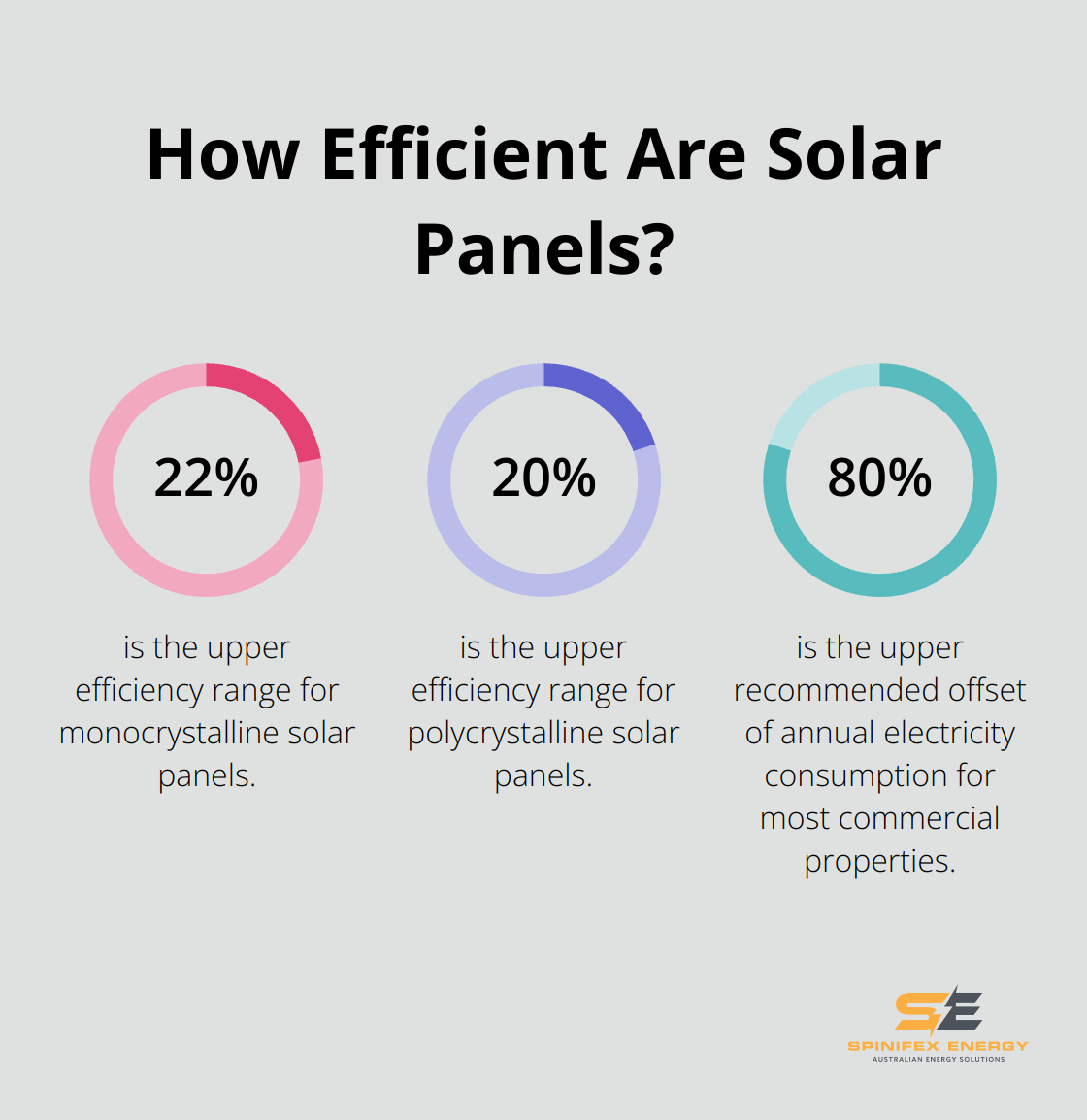
When selecting panels, consider the warranty and degradation rate. Top-tier manufacturers offer 25-30 year warranties with annual degradation rates below 0.5%. This ensures your panels will still produce at least 87.5% of their rated output after 25 years.
Select the Right Inverters
Inverters convert DC power from your panels into usable AC power. String inverters work well for uniform roof spaces, while microinverters or power optimizers can enhance performance on complex roofs with partial shading.
Large commercial installations often benefit from central inverters, which handle high power outputs efficiently. However, these create a single point of failure, so your system design should account for redundancy.
Optimize System Size and Layout
Your system size should match your energy consumption patterns and available space. Avoid oversizing, which can lead to export limitations and reduced financial benefits.
For most commercial properties, we recommend offsetting 70-80% of your annual electricity consumption. This approach often strikes the best balance between upfront costs and long-term savings.
Panel orientation and tilt angle play a crucial role in layout optimization. In the southern hemisphere, north-facing panels at a tilt angle equal to your latitude minus 10 degrees often yield optimal results. However, east-west orientations can sometimes benefit businesses with high morning and afternoon energy demands.
Incorporate Energy Storage
Energy storage systems allow you to store excess solar energy for use during peak demand periods or when solar production is low. Lithium-ion batteries are currently represented in the 2024 ATB for commercial battery storage across a range of durations (1–8 hours).
For a commercial system, expect to pay between $800-$1,200 per kWh of storage capacity. While this initial cost may seem high, the ability to avoid peak rates and provide backup power can make batteries a worthwhile investment.
When sizing your battery system, focus on your peak demand periods and any critical loads that need maintenance during power outages. Try to size your battery to cover 2-4 hours of your peak load.
The design of an effective commercial solar system requires careful consideration of multiple factors. While this guide provides a solid foundation, every business has unique energy needs. Companies like Spinifex Energy specialize in creating tailored solar solutions that maximize savings and promote sustainability. A data-driven approach ensures you receive a system optimized for your specific requirements, potentially reducing your electricity costs significantly.
As you finalize your system design, the next step involves exploring financing options to bring your commercial solar project to life.
How to Finance Your Commercial Solar Project
Explore Financing Options
Financing a commercial solar project requires careful consideration of various options. Cash purchase offers simplicity but demands substantial upfront capital. Solar loans provide an alternative, allowing businesses to spread costs over 5-7 years with interest rates typically ranging from 3% to 8%.
Power Purchase Agreements (PPAs) and solar leases present attractive choices for businesses aiming to avoid initial expenses. With a PPA, you’ll pay per kilowatt-hour, while a solar lease requires a fixed monthly payment regardless of system production.
Calculate Return on Investment
Determining the financial viability of your solar project involves calculating its Return on Investment (ROI) and payback period. The average commercial solar system in Australia achieves a payback period of 3-7 years (depending on factors such as system size, energy consumption, and local electricity rates).
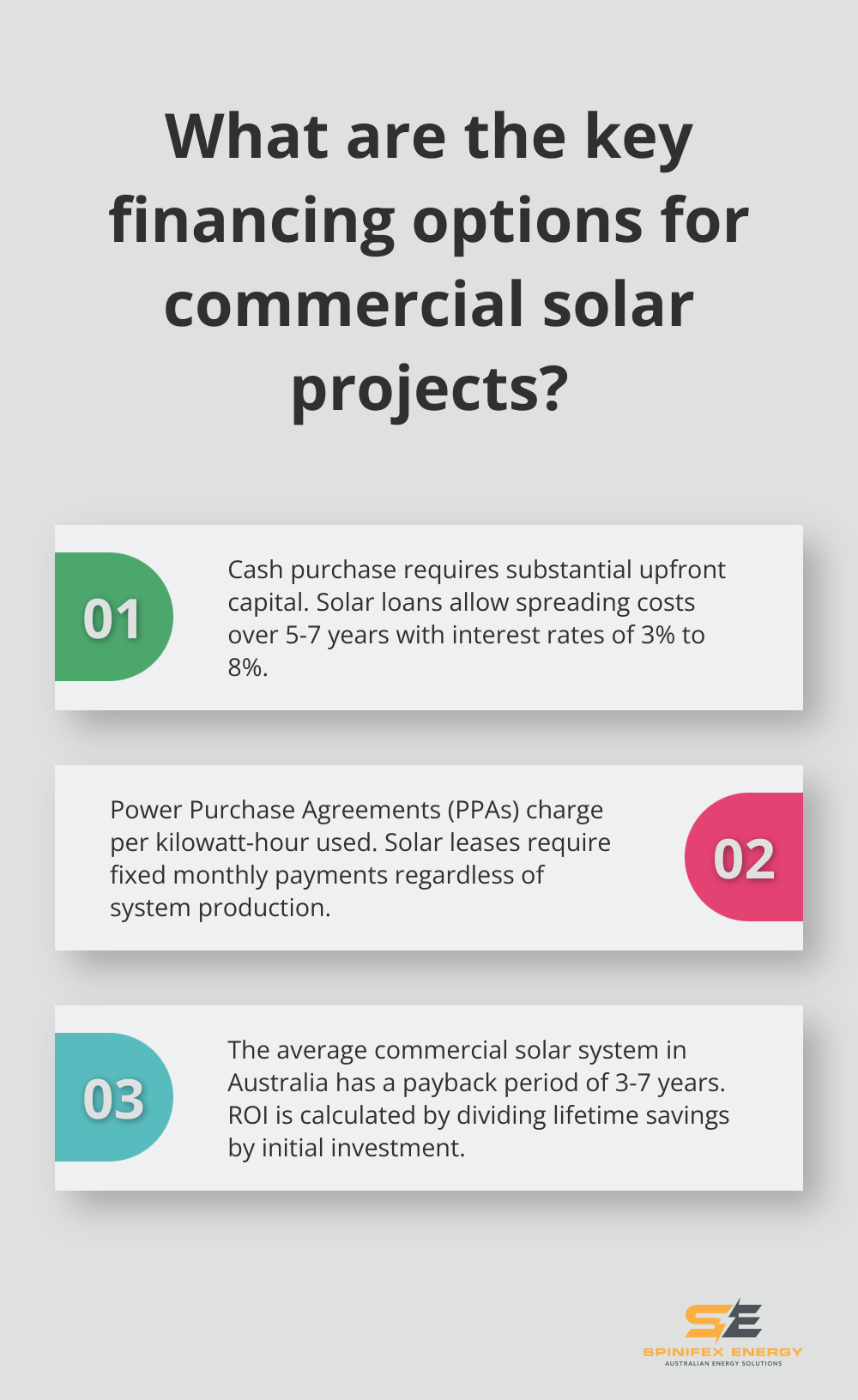
To compute ROI, divide lifetime savings by the initial investment. For instance, if a $100,000 system saves $200,000 over its 25-year lifespan, the ROI equals 100%. The payback period represents the time required for energy savings to match the initial investment.
Leverage Tax Incentives and Rebates
Maximize available tax incentives and rebates to reduce project costs. The Small-scale Technology Certificate (STC) scheme can significantly lower upfront expenses for eligible small-scale renewable energy systems. Larger systems benefit from Large-scale Generation Certificates (LGCs), which provide ongoing advantages based on renewable energy generation.
Businesses can often claim depreciation on solar assets, further enhancing the project’s financial outlook. Consult a tax professional to ensure you capitalize on all available benefits.
Consider Long-Term Savings
When financing a commercial solar project, focus on long-term savings rather than immediate costs. With projected increases in electricity prices, a well-financed solar system can deliver substantial future savings and stability.
Seek Expert Guidance
Navigating the complexities of solar project financing requires expertise. Professional energy consultants can provide personalized advice tailored to your business’s unique needs. They can help you analyze different financing options, calculate potential savings, and identify the most advantageous approach for your situation.
Final Thoughts
Commercial solar project development requires careful planning, expert design, and strategic financing. A thorough assessment of energy consumption, space evaluation, and understanding of local regulations forms the foundation for a tailored solar solution. The selection of high-performance components and system layout optimization ensures maximum efficiency, while energy storage integration enhances energy independence.
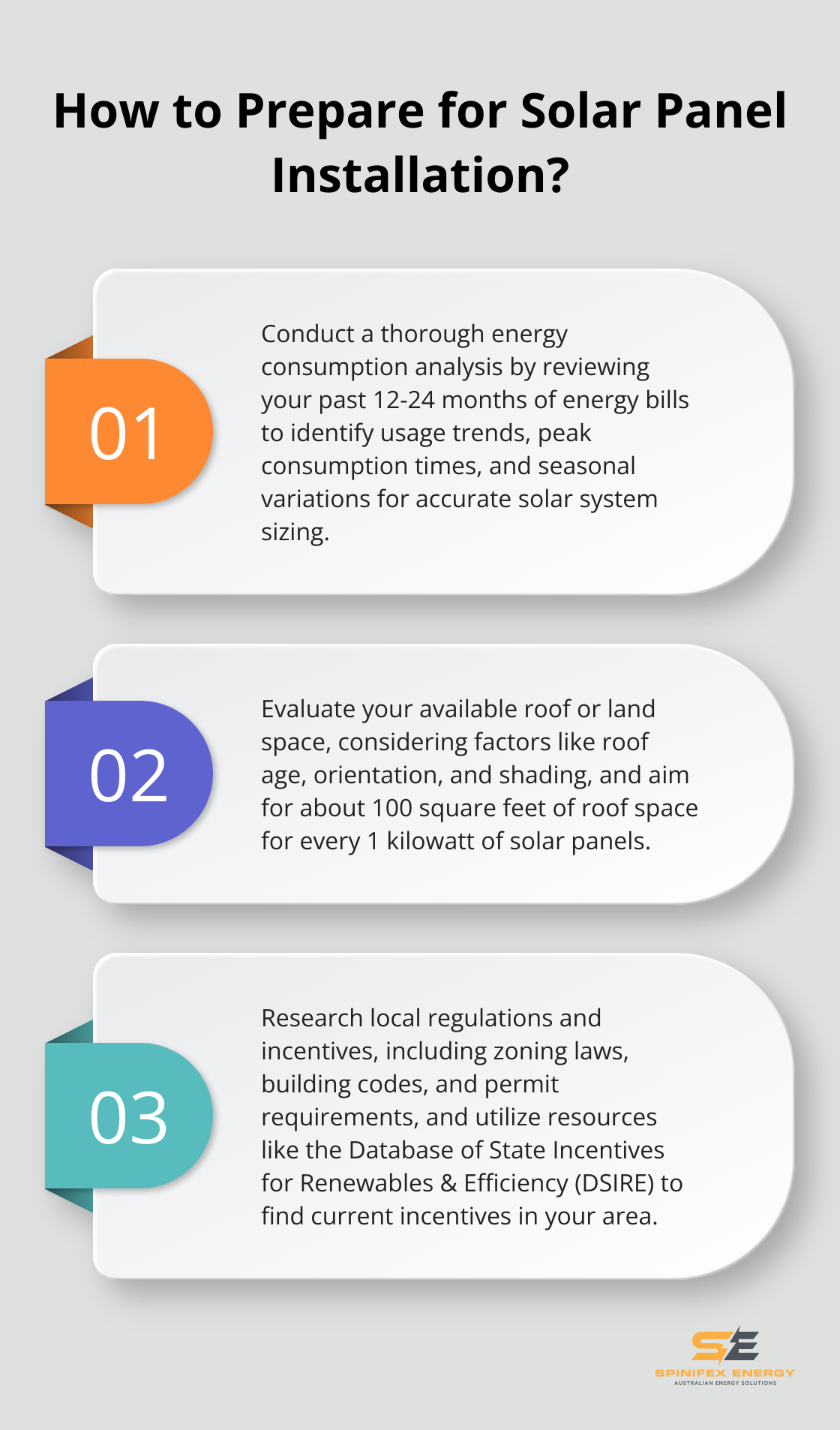
Financing a solar project demands a comprehensive approach, considering options such as cash purchases, loans, or Power Purchase Agreements. Calculation of return on investment and utilization of available tax incentives (up to 30% in some cases) can significantly improve the financial outlook. Businesses that embrace solar power position themselves for substantial long-term advantages, including reduced operational costs and improved sustainability credentials.
The next step for business owners interested in commercial solar projects is to engage with experienced professionals. Spinifex Energy specializes in tailored energy solutions, offering expertise in energy procurement, commercial solar systems, and battery storage. Their personalized solutions and proactive energy management strategies help businesses reduce their carbon footprint and maximize financial benefits.

